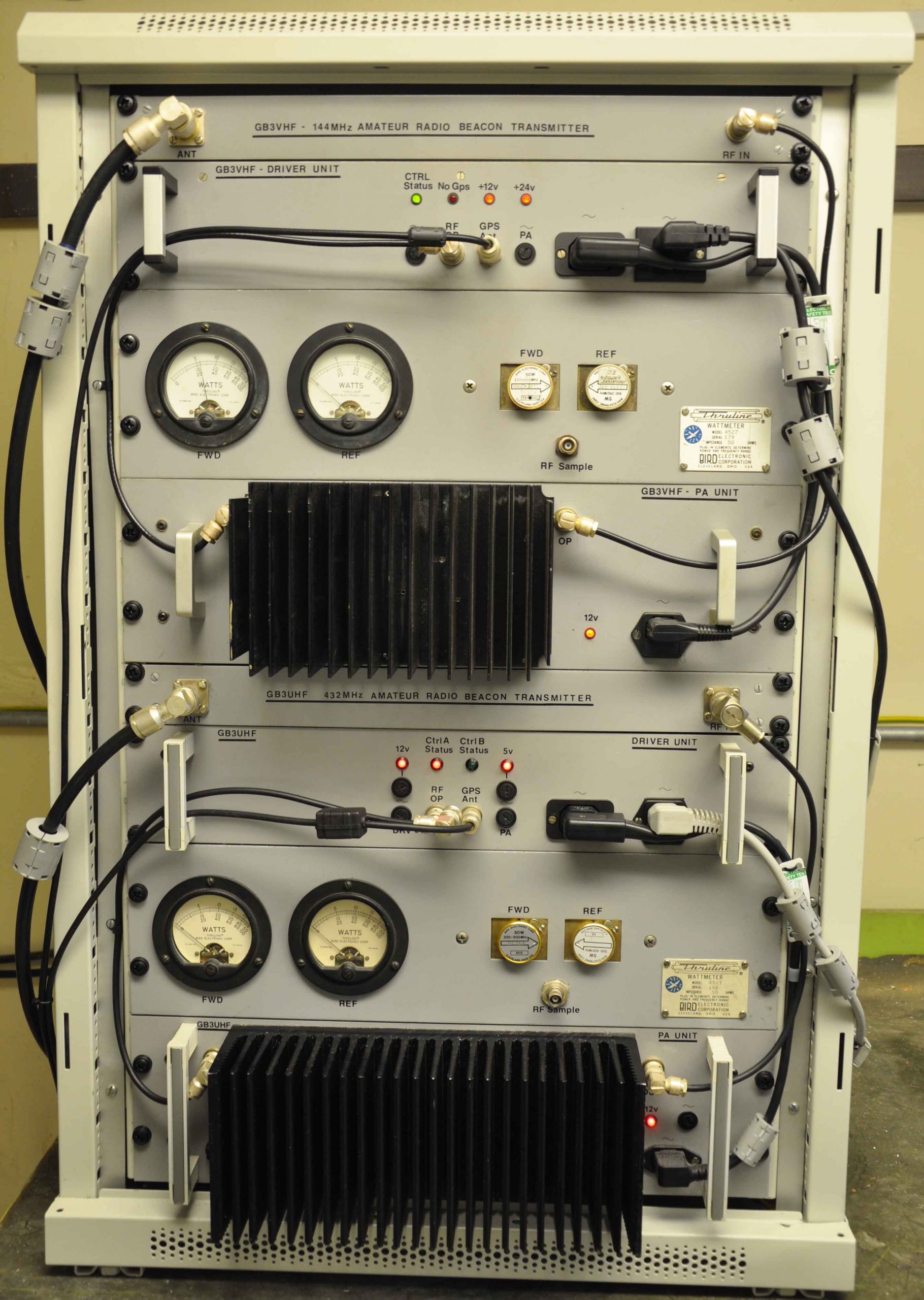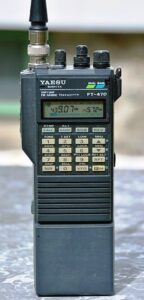
My experience with a faulty Yaesu FT-470 which was kindly gifted to me by another amateur may help someone else who owns an FT-470 2m/70cm dual band talkie that develops a similar problem.
When I initially tried out the talkie, I heard my TX on another radio, so it sounded like it was working, but in fact nobody else could hear me, not even a station just a couple of miles away.
I also noticed that RX was terrible as well and I could only hear very powerful signals, but even at that, it was with noise.
It transpired that the deaf RX and TX not getting out symptoms had something in common…
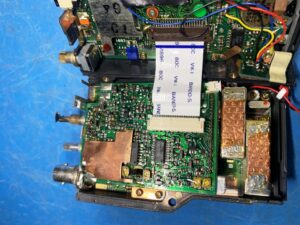
Once I got the top board separated and out of the cabinet, I noticed a very crusty looking solder joint below a stand off pin, which in turn was soldered, via solid core wire, to the centre pin of the BNC socket.
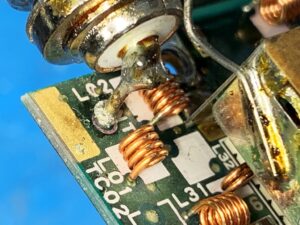
Things were a bit worse on the other side of the PCB once that had been removed from the rear cabinet.
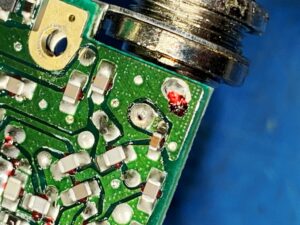
A loose antenna socket had flexed the solid core wire soldered from the BNC socket to the stand off pin on the PCB, and in turn stressing the delicate print below.
Stranded flexible wire between BNC and stand off pin might have been better for preventing this from occurring.
I would add that the socket was not loose when the radio was given to me, otherwise that might have led me to the fault sooner, but looking at the scrape marks on the threaded, slotted circular BNC securing ring, it became obvious that the ring had been tightened with pliers at some point.
The PCB track leading to the stand off pin, that feeds the BNC, had separated from the board and from C2001 (470pF) which is in series with the antenna socket.
If you look closely at the photo (above), the fracture between cap and print can be seen.
When a 0.6mm soldering bit on a temperature controlled solder station was placed on this track, it fell off never to be seen again!
Oh well, not to worry, I’ll just solder to the end of the SMD cap then, I thought, given that it appeared to be ok in the photo.
Alas, no go – the capacitor had suffered from being pulled about too much by the flexing, and ultimately, broken print with the result that the antenna side contact of the capacitor disintegrated as soon as any heat was applied.
So a 470pf cap was now needed.
Doesn’t have to be SMD as it’s possible to solder one end of a “normal” cap to the board and the other end direct to the BNC at a push, although SMD caps are likely to be less inductive.
I managed to find a replacement 470pF cap on eBay which restored normal operation.
Effectively, I’d been TXing into no antenna!
Fortunately no other damage was done – I was initially fearful that the now rare and expensive Mitsubishi 2m and 70cm PA ICs might have failed.
One to watch out for, and the moral of the story is to make sure that the BNC socket on your FT-470 remains tightly secured otherwise this repair will become necessary at some point.
I trust of some interest and help if you experience a similar problem.
73
Colin


